Fullfill your dream of glasses/contact lens free clear vision at
Sankara Nethralaya’s world class Laser vision Correction / LASIK Center
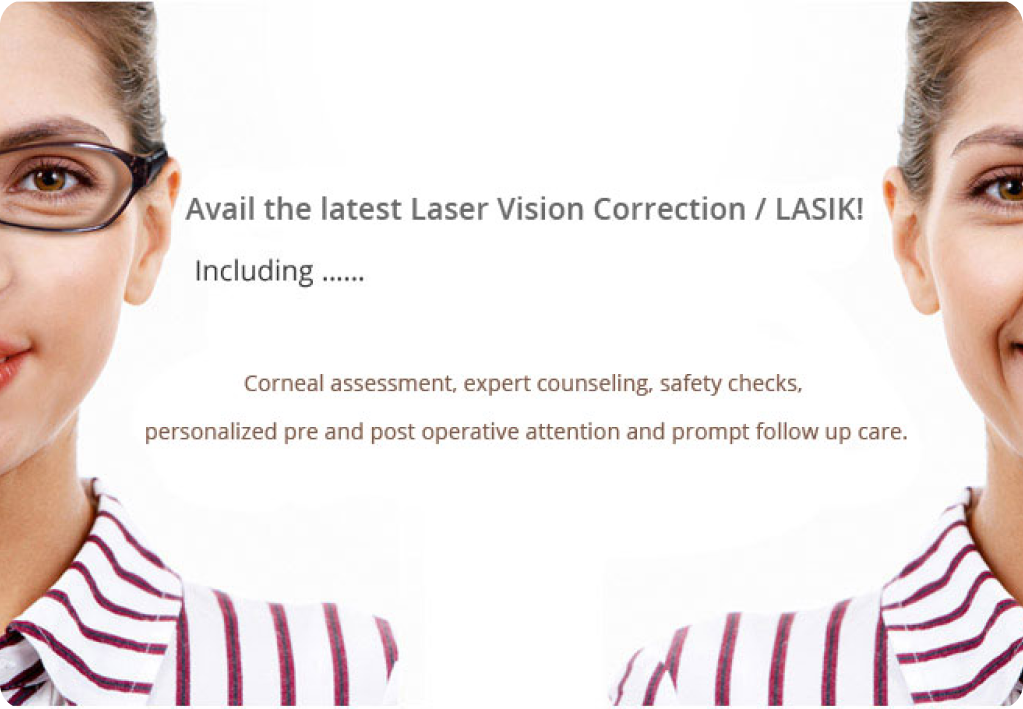

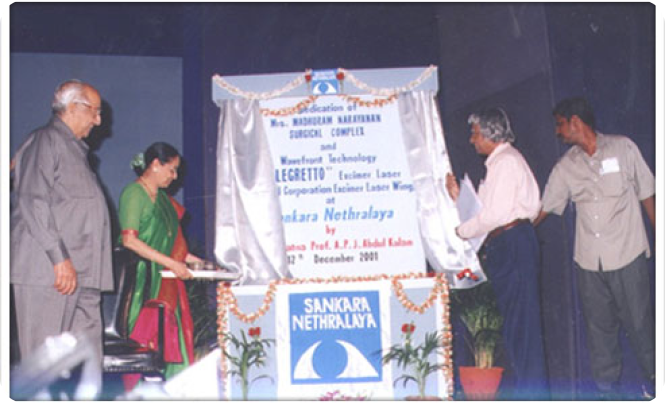
Inauguration of the ‘Laser Vision Correction Center’ at the main campus in year 2001 by thePresident of India Dr APJ Abdul Kalam
Laser Vision Correction is an outpatient procedure that is capable of correcting a wide range of nearsightedness (myopia), farsightedness (hyperopia) and astigmatism. LASIK is the acronym which stands for Laser Assisted in-Situ Keratomileusis. LASIK was first performed in clinical trials in the U.S. in 1991. The term refers to the use of a laser to reshape the cornea without invading the neighboring cell layers. Now it has expanded to other methods of Laser vision correction (LVC) as well. Laser vision correction has fast become the most preferred procedure for the treatment of myopia, hyperopia and astigmatism. The procedure is safe and the visual recovery is rapid which is why patients are undergoing this procedure the world over.
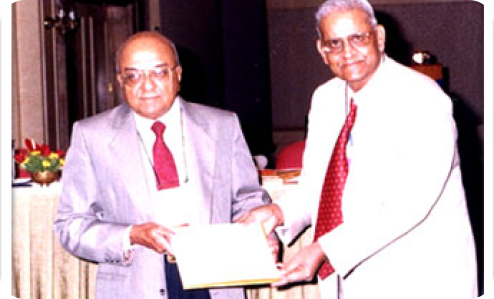
Dr. Rangaswamy Srinivasan & Dr. S. S. Badrinath
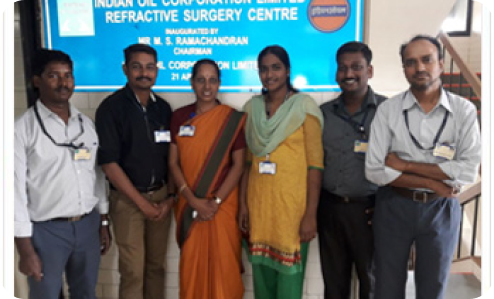
Our Laser Vision Correction Team
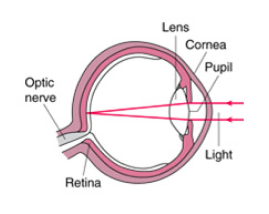
Normally, the rays of light entering the eye are brought to a precise focus on the retina – the light sensitive layer lining the back of the eye. When such a focus is not achieved, a refractive error results and vision is not clear. These imperfections in the focusing power of the eye are called refractive errors.
The common refractive errors are:
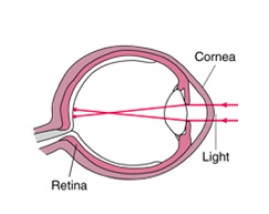
A myopic eye is longer than normal or has a cornea that is too steep, as a result of which the light rays focus in front of the retina. Close objects look clear, but distant objects appear blurred.

Hyperopia is a term used to describe the condition of farsightedness. The causes of hyperopic are typically genetic and involve an eye that is too short or a cornea that is too flat, as a result of which images focus at a point behind the Retina. People with hyperopia can usually see distant objects well, but have trouble focusing on nearby objects
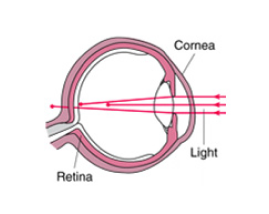
Astigmatism (cylindrical error) occurs when the incoming light rays are unable to reach a common focus within the eye. Astigmatism distorts or blurs vision for both near and far objects. The cornea is the clear front window of the eye. When you have astigmatism, the cornea curves more in one direction than in the other, like a rugby ball. It is possible to have astigmatism in combination with myopia or hyperopia.
There are several alternatives to correct your vision. Spectacles or contact lenses are the most common methods of correcting refractive errors. Refractive surgery is also an option to correct or improve your vision. These surgical procedures are used to adjust your eye’s focusing ability by reshaping the cornea, or front surface of your eye.
Refractive surgery is a procedure intended to reduce a person’s dependence on glasses or contact lenses by reshaping the cornea to enable light entering the eye to be properly focused onto the retina for clearer vision.
The most common refractive surgical procedures performed today are:
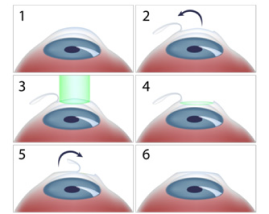
LASIK (Laser In-Situ Keratomileusis): It is a surgical procedure intended to reduce a person's dependence on spectacles or contact lenses. In this procedure a thin hinged flap of cornea (the cornea is the transparent, dome-shaped window covering the front of the eye) is created and lifted to one side to access the underlying cornea (called the stroma) and remove some corneal tissue using an excimer laser. The flap is then repositioned in its original position.
Femto LASIK
The primary advantage for the use of femtosecond lasers in corneal refractive surgery is the improved safety over microkeratomes in creation of the lamellar flap.
Additional advantages includes
1. Increased precision
2. Customization
3. Ease of surgery
Femtosecond lasers allow for customization of the flap for each patient. In addition to producing reliable flap thicknesses, the flap diameter can be selected to one-tenth of a millimeter.
Femtosecond lasers are (state-of-the-art) instruments that offer more surgical precision than current manual techniques.
PRK (Photorefractive Keratectomy) / LASIK
It was the original kind and is still sometimes used. It involves gently scraping the surface layer off the cornea and then using a laser beam to re-shape it.
Epi LASIK ( Epithelial Laser-Assisted In-Situ Keratomileusis: EPI LASIK)
It is a procedure, which combines the advantages of PRK and LASIK, Epilasik involves the use of an epikeratome, only the superficial epithelial layer of cornea.
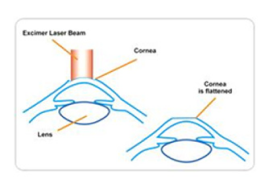
Wave front-guided LASIK
It is also referred to as custom LASIK or wave front LASIK, is similar to conventional LASIK, except that in addition to treating a patient’s basic refractive error, specific distortion in a patient’s eye (high order aberrations) can also be treated.
SMILE
With the development of SMILE, a minimally invasive and flapless procedure has become available. It has quickly established itself as a gentle treatment option.
SMILE is also a flapless procedure, meaning that there are no flap-related complications and side effects. As a result, corneal sensitivity, for the most part, is quickly recovered.
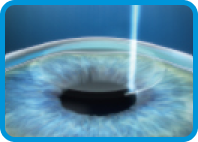
Lenticule creation
A small piece of corneal tissue (lenticule) and a small incision are created inside the intact cornea.

Lenticule removal
Lenticule removal, the lenticule is removed through the incision with minimal disruption to the corneal biomechanics.
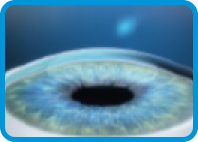
Lenticule changes
Impairment is corrected Removing the lenticule changes the shape of the cornea, thereby achieving a vision correction.
Our LASIK consultant / counselor will have detailed discussion about the appropriate procedure based on the eye measurements, glass power and refractive surgery safety tests preoperatively.
Procedure:
What to expect during the procedure?
Immediately after the procedure:
Follow up:
picture_as_pdf
Post-Refractive surgery instruction
Do’s:
Don’ts
There are some alternatives to correct your vision. Spectacles or contact lenses are the most common methods of correcting refractive errors. The other option to correct your vision is called ICL (implantable contact Lens), When laser refractive surgery is contraindicated, ICL is a kind of lens which is implanted into the eye and does not require frequent removal like a normal contact lens.
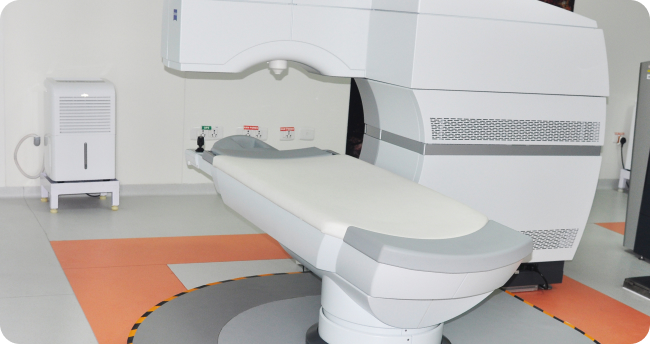
In Charge
Optometrist
Optometrist
Optometrist
Optometrist
Secretary
Secretary
Secretary
OT Team
OT Team
OT Team
Mr. Vijayakumar (In-Charge)
Phone: +91 9382277727
Mr. Sambasivam
Phone: +91 93801 07258
Mr. LakshmanRaj
Phone: +91 93802 88188

I would like to register our sincere appreciation of the professional services rendered by the counsultant and the entire panel of doctors who took care of my son, Adhitya, who underwent epi-lasik surgery performed by the consultant.
I must register the counseling services provided by Ms. Subhajaya from the time we met her during pre-surgery phase till my son got the post-surgery ailments completely cured. She was ready to respond to us whenever we contact her, irrespective of the date and time.
Sankara Nethralaya is standing by its policy purely because of the panel of doctors and support personnel who give care and compassion. Very happy that my son had his surgery in Sankara Nethralaya with clearly laid down procedures and processes.
S.B


Excellent Service from start to end. Clarity about the Procedure and Surgery given by the consultant during Consultation, Trust and Kind words by the consultant during Smile Lasik were highly appreciable and thankful. And the whole Lasik Team - Counselor Ms.Subhajaya Mam, Mr. Sambasivam. Mr. Senthil and Ms.Sangeeta Mam guided and helped me all the way to complete my long time dream come true. I wish to thank each one of them.
M.S.R
